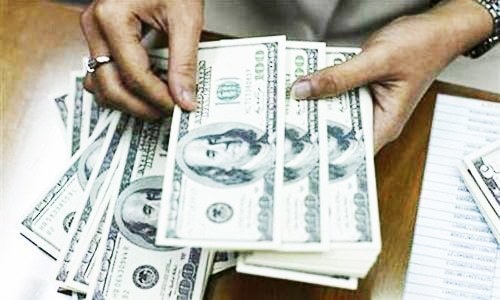KARACHI: The government found another reason to sigh with relief on Thursday as the crucial current account deficit (CAD) slipped slightly by 4.4 per cent to $7.98 billion, driven by a fourth quarter decline of 10 per cent, according to data released by the State Bank of Pakistan (SBP).
The CAD lies at the heart of the economy’s difficulties since it is primarily responsible to draining the foreign exchange reserves that have fallen to slightly more than one month’s import cover since hitting a peak of 5 months import cover in October 2016. Last year the CAD hit a record high of $18.619bn, implying loss of reserves at roughly $1.5bn per month.
The improvement in the CAD owed itself almost entirely to a $1bn rise in workers remittances during the period under review. All other indicators — exports, imports and the overall trade balance — remained more or less static. Contrary to the data from the Pakistan Bureau of Statistics released last week, the SBPs read out of the trade deficit showed no change from last year in the July-Dec period. Last weeks PBS data had showed a 5pc fall in the trade deficit for the first half of the fiscal year over the same period last year.
But on a month-on-month basis, the CAD during December, 2018 increased by 37.3pc to $1.6bn compared to $1.2bn in November, 2018 showing much work remains to be done.
The SBP report highlights that in the six months, exports remained unchanged from last year, rising by $9m to touch $11.5bn by December. The minimal increase has come despite the government’s incentives to boost exports coupled with depreciation of local currency.
The import bill also showed marginal change, where goods imports rose by 3pc to touch $27.39bn for the July to Dec period, and services imports fell by 16pc to come in at $4.456bn in the same period.
Standing at nearly $8bn for six months, the CAD figures imply a reserve erosion of $1.33bn per month. Pakistan has $13.5bn of foreign exchange reserves of which $7bn are with the SBP and the rest are held by commercial banks.
The finance minister Asad Umar recently said the government was not in hurry to agree to an International Monetary Fund-led programme despite holding negotiations with the authorities for more than five months. The lack of clarity on what government plans to do in order to increase reserves is causing uncertainty in the business community.
Published in Dawn, January 18th, 2019













































